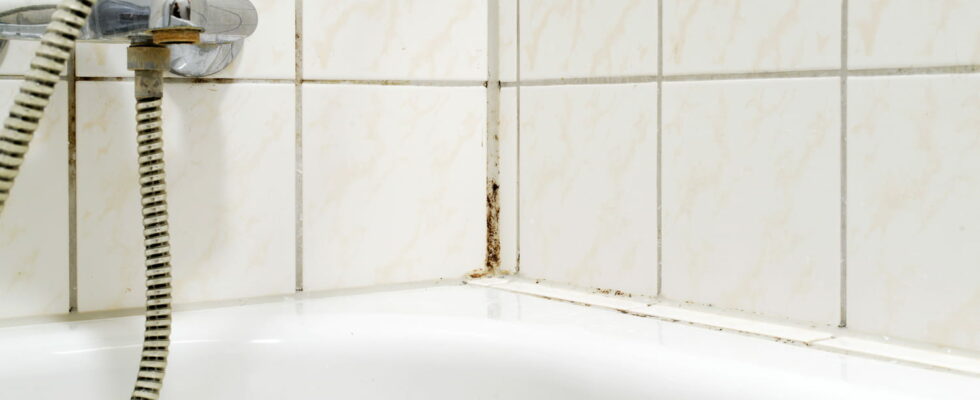This product is even more effective than bleach and white vinegar in eliminating mold in the bathroom.
Almost no one escapes it! Mold in the bathroom is a real scourge. Unsightly and dangerous for your health, it is important to treat the problem quickly, as soon as the first black marks appear. Because once installed, it is really difficult to dislodge. For a long time, the first instinct was to use bleach to eliminate this problem.
Unfortunately, in addition to being a harmful product for health and the environment, it is not as effective as it seems, especially in the bathroom. Bleach masks the problem more than it eliminates it. The risk: seeing the mold reappear quite quickly and to an even greater extent. Bleach can be used to remove mold and mildew from non-porous surfaces, but in the bathroom it will be ineffective because mold often grows on porous materials.

A method that is becoming more and more popular is the use of white vinegar. Although it has antifungal and antibacterial properties, it is also not the most effective product for getting rid of mold in the bathroom. Another product is much more effective: hydrogen peroxide.
It’s really simple to use. In a spray bottle, mix 1/3 hydrogen peroxide with 2/3 water. Spray liberally on areas affected by mold (joints, tiles, ceiling, shower curtain, etc.). Let it sit for 10 to 15 minutes for the hydrogen peroxide to kill the mold spores and loosen the stains. Next, use a toothbrush or sponge to scrub the affected areas and remove any residue. Rinse with warm water then wipe with a dry cloth to avoid any residual moisture. If traces remain, repeat the operation.
The main disadvantage is that it can be very difficult, if not impossible, to remove mold from silicone shower seals once it has become embedded. But this is the case with all the products you may use. If, despite your efforts, the mold persists, the only solution will be to remove the seals and replace them.
However, if mold has not yet established itself on the joints, it is possible to prevent it by taking a few precautions. After each shower, use a squeegee to remove water from the walls and wipe the joints with a dry cloth. Also make sure to ventilate the bathroom well by activating the VMC or opening a window to limit humidity, which encourages the appearance of mold. These simple actions can extend the life of silicone seals and keep your shower clean.
